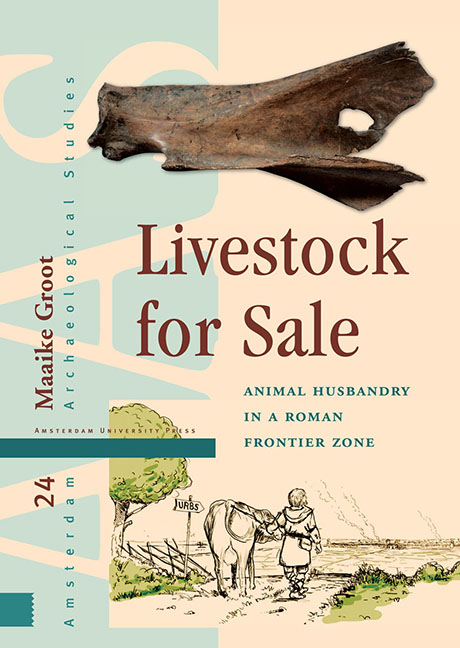Book contents
Summary
This chapter describes the main methods used in collecting and analysing zooarchaeological data for this study. Nearly all these data were taken from existing publications or unpublished reports; only one assemblage was analysed specifically for this study. The variety of the publications and authors means that there are differences in the methods that were used and in the detail in which assemblages have been analysed and described. In many cases, the lack of primary data limited the use of the data set. The size of data sets further affects their usefulness, with larger data sets naturally having more to offer than smaller ones. Nevertheless, smaller assemblages were included in order to fully utilise the potential of the zooarchaeological archive for the Roman Dutch River Area.
TAPHONOMY
Taphonomy has a huge impact on zooarchaeological data. To investigate the extent of this impact, and whether it has affected the sites in the study area in similar ways, a taphonomical study was carried out. This study was limited to cattle, for three reasons. First, in theory, each species could have a different taphonomical history, depending on whether it was consumed, how the carcass was butchered and how refuse or diseased animals were dealt with. Second, cattle is the most common animal in most assemblages, and therefore provides the best data. For less common species, or those that fluctuate strongly over time, the number of fragments may be too small. Finally, since this study was carried out in the first place to help understand skeletal element distribution, which focuses on cattle, it seemed logical to limit the taphonomical analysis to cattle as well.
For 40 assemblages from 24 rural sites and five assemblages from military or urban/military sites, data on two major taphonomic agents were collected. By looking at these two taphonomic agents (butchery and dog gnawing), we can get an indication of the impact of taphonomy. Butchery by humans will cause fragmentation of bones into smaller pieces. It is well-known that gnawing by dogs has a major effect on skeletal element distribution, since dogs favour porous ends of long bones, such as proximal humerus and distal femur. The percentage of loose teeth is the third variable which was recorded, and is taken as an indication of the degree of fragmentation and preservation of the animal bones.
- Type
- Chapter
- Information
- Livestock for SaleAnimal Husbandry in a Roman Frontier Zone, pp. 69 - 80Publisher: Amsterdam University PressPrint publication year: 2016



